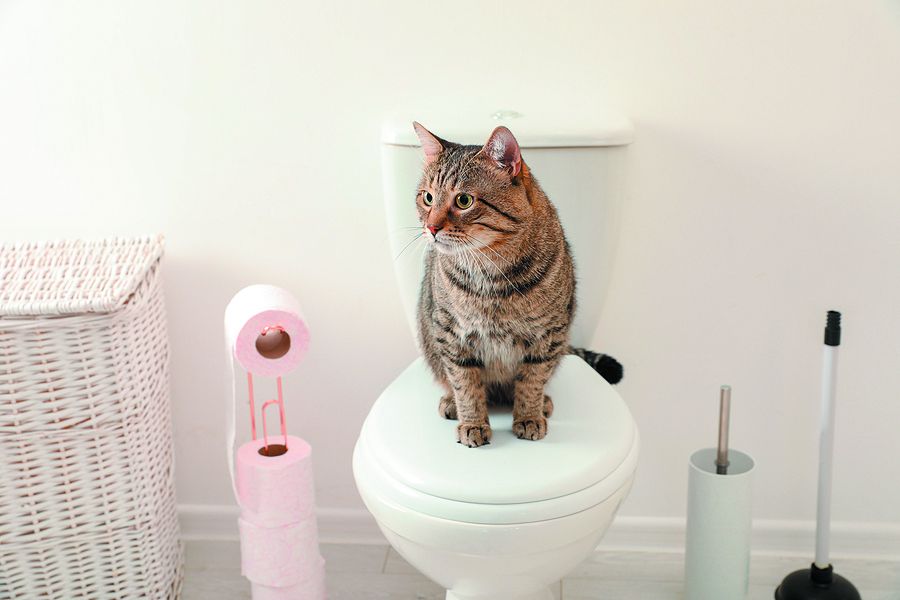We've found this great article involving 10 Things You Should Never Flush Down The Toilet directly below on the web and decided it made sense to write about it with you on this page.

When it pertains to taking care of waste, especially animal waste, many people commonly resort to the convenient option of flushing it down the bathroom. Nevertheless, this relatively easy solution can have significant effects for the environment and public health. In this short article, we'll explore why flushing pet waste down the toilet is a poor idea and provide alternative methods for correct disposal.
Intro
Proper waste disposal is vital for preserving environmental sustainability and public health. While it may seem harmless to flush animal waste down the commode, it can cause different issues, both for the setting and human health.
Dangers of flushing pet waste
Environmental effect
Flushing pet waste introduces harmful microorganisms and virus right into rivers, which can adversely impact aquatic communities. These pathogens can infect water sources and injury marine life, interfering with fragile ecosystems.
Public health problems
Animal waste contains damaging microorganisms such as E. coli and Salmonella, which can present major wellness risks to people. Purging animal waste down the bathroom can contaminate water materials, leading to the spread of diseases and infections.
Alternatives to flushing
As opposed to purging pet waste down the toilet, there are several different disposal approaches that are a lot more eco-friendly and hygienic.
Composting
Composting animal waste is an environmentally friendly way to dispose of it. By composting, raw material is broken down into nutrient-rich dirt, which can be used to feed gardens and plants.
Land fill disposal
Dealing with pet waste in a land fill is one more option. While not as eco-friendly as composting, it is a more secure choice to flushing, as it stops the contamination of water sources.
Pet waste disposal systems
There are specialized pet dog garbage disposal systems offered that safely and hygienically get rid of pet waste. These systems typically utilize enzymes to break down waste and remove odors.
Steps to appropriate animal waste disposal
To ensure proper disposal of animal waste, follow these actions:
Scooping and bagging waste
Consistently scoop and bag animal waste using eco-friendly bags. This prevents waste from polluting the atmosphere.
Making use of assigned waste containers
Dispose of bagged pet waste in marked waste containers, such as garden compost containers or land fill bins. Stay clear of flushing it down the commode at all costs.
Cleaning litter boxes and family pet locations on a regular basis
Regularly tidy litter boxes and pet dog areas to stop the build-up of waste and microorganisms. Use pet-safe cleansing products to preserve health.
Advantages of proper disposal approaches
Embracing appropriate disposal techniques for animal waste provides several benefits:
Minimized environmental pollution
Appropriate disposal methods minimize the threat of environmental pollution, shielding waterways and communities from contamination
Decreased risk of water contamination.
By avoiding flushing pet waste down the toilet, the danger of water contamination is substantially decreased, protecting public health.
Boosted cleanliness and health
Appropriate disposal approaches advertise far better hygiene and health, producing a more secure setting for both humans and pets.
Conclusion
In conclusion, flushing animal waste down the toilet is unsafe to the environment and public health. By adopting alternative disposal techniques and complying with proper waste administration techniques, we can reduce the unfavorable effect of animal waste and contribute to a cleaner, much healthier earth.
What To Do With Dog Poo – The Do's And Don'ts Of Disposing Of Faeces
Dog poo bins
Some councils provide dedicated dog waste bins in popular dog-walking areas that can take dog poo that has been bagged but you can legally dispose of dog waste in any public litter bin, as long as it is securely bagged. This also applies to your wheelie bin at home.
Do not flush
Water companies do not recommend flushing dog faeces down the toilet because certain parasites can survive the water processing treatment and are potentially harmful to humans. You should also never consider flushing dog poo that has been bagged down the toilet as the bags will not break down and instead create severe blockages in the sewage system.
In the woods
The Forestry Commission promotes a ‘stick and flick’ method for dealing with waste in the woods. This means finding a stick and using it to flick any poo from off the path so that it is out of the way of other walkers. You could also bury it as long as it is not in an area where there might be livestock.
Livestock
Parasites found in dog poo can be transmitted to livestock if they inadvertently eat infected faeces that has been left on grazing land. This could result in the death of sheep or abortion in cattle so you should always make sure you pick up your dog’s waste in fields where livestock could be present.

I recently found that piece on Don't Flush Your Pets Poo Down The Loo, Vet Warns when perusing the web. Sharing is good. Helping people is fun. I praise you for being here. Revisit us soon.
Call
Comments on “Our Threats of Animal Waste in the Toilet”